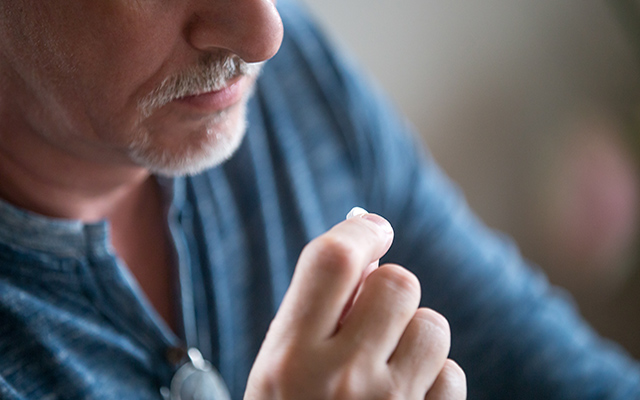Some might call it a “come-to-Jesus moment” though my own spiritual leanings may explain it as a “flash of enlightenment.” But when I recounted last week’s labyrinthian journey through our local healthcare system to an old pal, I suspect that behind his sympathetic response lurked a more prosaic conclusion: The old guy finally woke up and smelled the coffee.
The saga began with a routine visit on Tuesday to my dentist for some long-delayed work on a fractured tooth. I’ve never quite understood why such a procedure requires a blood pressure test, but I was cuffed and, as I usually do in these circumstances, cautioned the hygienist that my “white coat syndrome” would assuredly produce a higher reading than normal. A little nitrous oxide would calm me down, I noted, and we could proceed.
“It’s very high,” she reported.
“It’ll come down,” I assured her, noting somewhat disingenuously that whenever I used to measure it at home, it was totally fine. (I hadn’t measured it in years.)
Six more readings ensued over the next 40 minutes and the systolic number continued to hover over 200. “That’s weird,” I mumbled. “Maybe I’m dehydrated or something.”
“We’ll have to reschedule the procedure,” the dentist announced. “And you need to see your doctor as soon as possible. Those readings describe a hypertensive crisis.”
I have long been skeptical of the tools Western medicine employs to treat chronic illnesses, so I’ve always avoided prescription medications, opting instead for acupuncture, herbal supplements, and various other alternative approaches. Still, those readings were indeed stratospheric (if they were to be believed), so I promised to schedule an appointment. I really wanted to get that tooth fixed.
I got on the books at my local clinic for a July 14 “Medicare wellness visit,” which seemed appropriate, and then forgot about the whole thing. I was completely asymptomatic, after all; it was just a number.
I was awakened on Thursday by my overactive prostate and decided to opt out of a planned social event that afternoon. There’s nothing quite like driving a long distance to a foreign locale while anxiously pondering whether there might be a restroom somewhere on the horizon. That particular affliction, however, reminded me of Tuesday’s blood pressure fiasco, so I dragged my dusty monitor out of the hall closet, inserted some batteries, and wrapped the cuff around my arm, confident that the results would confirm my view that it had all been a fluke.
The best of three 9 a.m. readings: 216/110. The best of three noon readings: 212/111. I headed to an urgent care clinic on the other side of town. At the clinic, my numbers predictably floated even higher and produced a conspicuous level of alarm among the practitioners.
The best of three 9 a.m. readings: 216/110. The best of three noon readings: 212/111. I headed to an urgent care clinic on the other side of town. At the clinic, my numbers predictably floated even higher and produced a conspicuous level of alarm among the practitioners. Blood was drawn, an EKG was performed, grim faces predominated.
But I didn’t exhibit any symptoms of stroke or impending cardiac arrest, and nothing from the blood tests or EKG indicated anything out of the ordinary. I felt perfectly fine, except for my misbehaving prostate. So, when the doctor showed up to review the situation, I figured she’d just send me to the pharmacy to pick up some pills.
“You need to go the ER right away,” she announced. “They can do more tests than we can do here. We need to find out if there’s something else going on.”
Envisioning a three-hour wait in a room packed with sick people, I drove straight home. I awoke early the next morning and checked my numbers. They had declined (189/102) but so had my hubris, so I headed for the hospital. I knew I had to run the gauntlet before I could get the drugs.
The ER was empty, so the triage nurse quickly ushered me into a room where she — yup — took my blood pressure (very high). When I mentioned that the urgent-care people had compiled a rather copious record of my situation just yesterday, she warned me that I’d be going through the same routine today, only more so. I shrugged. “I guess I need to start taking better care of myself now that I’m coming up on 72.”
She gave me the once-over. “You look great.”
Once ensconced in my own room, an ER doctor soon arrived with a nurse and a scribe to record my medical history. I explained my aversion to conventional medicine but admitted that my age — and blood pressure — now warranted a more cautious approach.
“You look great,” the doc offered.
The next four hours featured bouts of complete boredom interrupted by the beeping of the blood pressure monitor, multiple EKGs, a couple of blood draws, and (finally!) an intravenous dose of a drug to lower my systolic number. After some time, it crept down to 171 and I quietly rejoiced, imagining that I would soon be released from captivity, but the next reading (193) brought despair.
The next four hours featured bouts of complete boredom interrupted by the beeping of the blood pressure monitor, multiple EKGs, a couple of blood draws, and (finally!) an intravenous dose of a drug to lower my systolic number. After some time, it crept down to 171 and I quietly rejoiced, imagining that I would soon be released from captivity, but the next reading (193) brought despair. Soon after, though, a nurse arrived to offer an overview of the situation and signal my imminent release. All the blood tests came back normal, she explained, and the EKGs revealed no heart problems. Still, she urged me to make an appointment with my regular doctor as soon as possible to get a stress test and other possible evaluations. They still don’t know why my blood pressure would be so high, she admitted.
And then, almost as an afterthought, she added that I could pick up my meds later that afternoon at a nearby pharmacy. I would have thrown my grateful arms around her had it not been for the tangle of tubes and wires pinning me to the hospital bed.
I took one dose of lisinopril on Friday night and another Saturday morning before donning my blood pressure cuff. The results seemed promising (164/91), but I’ll still schedule that stress test. I’m in the system now.
Maybe I’ll even ask them to check out my prostate.





This Post Has 0 Comments